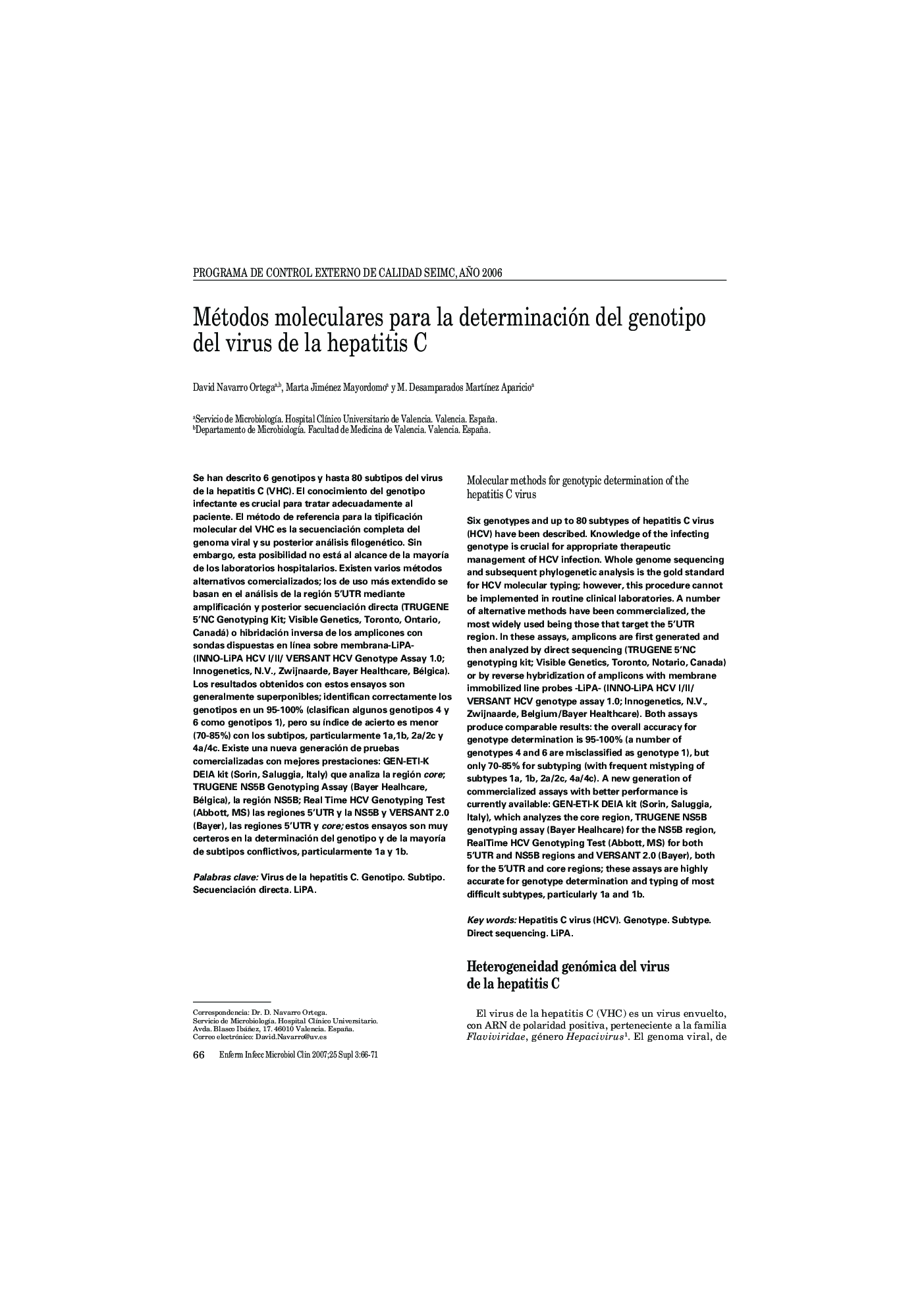| Article ID | Journal | Published Year | Pages | File Type |
|---|---|---|---|---|
| 3403091 | Enfermedades Infecciosas y Microbiología Clínica | 2007 | 6 Pages |
Abstract
Six genotypes and up to 80 subtypes of hepatitis C virus (HCV) have been described. Knowledge of the infecting genotype is crucial for appropriate therapeutic management of HCV infection. Whole genome sequencing and subsequent phylogenetic analysis is the gold standard for HCV molecular typing; however, this procedure cannot be implemented in routine clinical laboratories. A number of alternative methods have been commercialized, the most widely used being those that target the 5'UTR region. In these assays, amplicons are first generated and then analyzed by direct sequencing (TRUGENE 5'NC genotyping kit; Visible Genetics, Toronto, Notario, Canada) or by reverse hybridization of amplicons with membrane immobilized line probes -LiPA- (INNO-LiPA HCV I/II/ VERSANT HCV genotype assay 1.0; Innogenetics, N.V., Zwijnaarde, Belgium/Bayer Healthcare). Both assays produce comparable results: the overall accuracy for genotype determination is 95-100% (a number of genotypes 4 and 6 are misclassified as genotype 1), but only 70-85% for subtyping (with frequent mistyping of subtypes 1a, 1b, 2a/2c, 4a/4c). A new generation of commercialized assays with better performance is currently available: GEN-ETI-K DEIA kit (Sorin, Saluggia, Italy), which analyzes the core region, TRUGENE NS5B genotyping assay (Bayer Healhcare) for the NS5B region, RealTime HCV Genotyping Test (Abbott, MS) for both 5'UTR and NS5B regions and VERSANT 2.0 (Bayer), both for the 5'UTR and core regions; these assays are highly accurate for genotype determination and typing of most difficult subtypes, particularly 1a and 1b.
Keywords
Related Topics
Life Sciences
Immunology and Microbiology
Microbiology
Authors
David Navarro Ortega, Marta Jiménez Mayordomo, M. Desamparados MartÃnez Aparicio,
